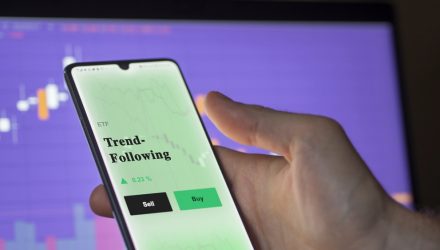Fundamental investing and the traditional 60/40 portfolio have met their match this year as equities and bonds have fallen in tandem, driven into bear markets by soaring, persistent inflation and aggressive interest rate hikes by the Fed. One of the few trends that have risen to the surface and performed strongly in 2022 has been one that invests around, well, trends.
Trend following doesn’t invest based on the forward-looking price-to-earnings of a company, or on any of the traditional metrics by which companies are measured. Instead, it invests in what is actually happening in markets compared to market predictions that advisors and analysts try to make.
It’s a style of investing that removes the perception of how an asset might perform from the equation and is entirely data-driven based on how an asset is currently performing. Specialized analysts known as quants utilize a barrage of models and equations to anticipate how an asset or class of assets is most likely to trend based on an asset’s current performance. It goes directly against the adage of “buy and hold” as it trades constantly, continuously altering its allocations as it takes long or short positions on any number of assets and yet this year, trend following is performing when little else is.
Removing Sentiment From the Equation
Trend following has been dubbed “crisis alpha” for a reason as it performs best and offers the strongest returns in times of strong market volatility and dislocation. Often investors can be somewhat slower to respond to market changes, holding onto positions that might not serve them best in the current environment in the hopes that there will be a return to the previous market circumstances that benefited those positions.
This has been especially true this year coming off essentially a decade-long bull run for the traditional 60/40 portfolio. Bonds have failed to offer protection from falling stocks within portfolios and advisors are increasingly looking to alternatives for portfolio hedges and uncorrelated returns.
Managed futures are shining in this regard as they maintain a low to zero correlation to equities and bonds because they transact in the futures market. Managed futures hedge funds have performed strongly, as have ETFs, particularly the iMGP DBi Managed Futures Strategy ETF (DBMF) which seeks to capture the average return of the 20 largest managed futures hedge funds. By offering the strategy within the cost-efficient ETF wrapper, DBMF seeks to provide similar performance while also preserving more of the returns that are captured via significantly lower management fees. Year-to-date DBMF is up 30.51% as of 09/21/22.
2022 Positions Have Reaped Major Returns
DBMF has been able to capitalize on some major changes happening globally this year, going long and capturing the up spike in crude oil in the first half of the year, short Treasuries when REITs spiked, while also taking advantage of the rapid depreciation of the Japanese yen and other currencies due to a strong U.S. dollar.
“When you talk about the craziest things in the market,” Andrew Beer, co-portfolio manager of DBMF and managing member of Dynamic Beta investments, told Bloomberg, “I think if you’d asked FX strategists earlier this year, ‘The yen is at 115 — where could it possibly go?’ The guy who said 125 would’ve been laughed out of the room.” That’s exactly what’s happened to the yen, however, and the current conversion is roughly 142 yen to the USD. DBMF has captured that.
It is an actively managed fund that uses long and short positions within derivatives, mostly futures contracts, and forward contracts. These contracts span domestic equities, fixed income, currencies, and commodities (via its Cayman Islands subsidiary).
The position that the fund takes within domestic managed futures and forward contracts is determined by the Dynamic Beta Engine. This proprietary, quantitative model attempts to ascertain how the largest commodity-trading advisor hedge funds have their allocations. It does so by analyzing the trailing 60-day performance of CTA hedge funds and then determining a portfolio of liquid contracts that would mimic the hedge funds’ performance (not the positions).
DBMF takes long positions in derivatives with exposures to asset classes, sectors, or markets that are anticipated to grow in value and takes short positions in derivatives with exposures expected to fall in value. Under normal market conditions, the fund seeks to maintain volatility between 8%–10% annually.
DBMF has a management fee of 0.95%.
For more news, information, and strategy, visit the Managed Futures Channel.

